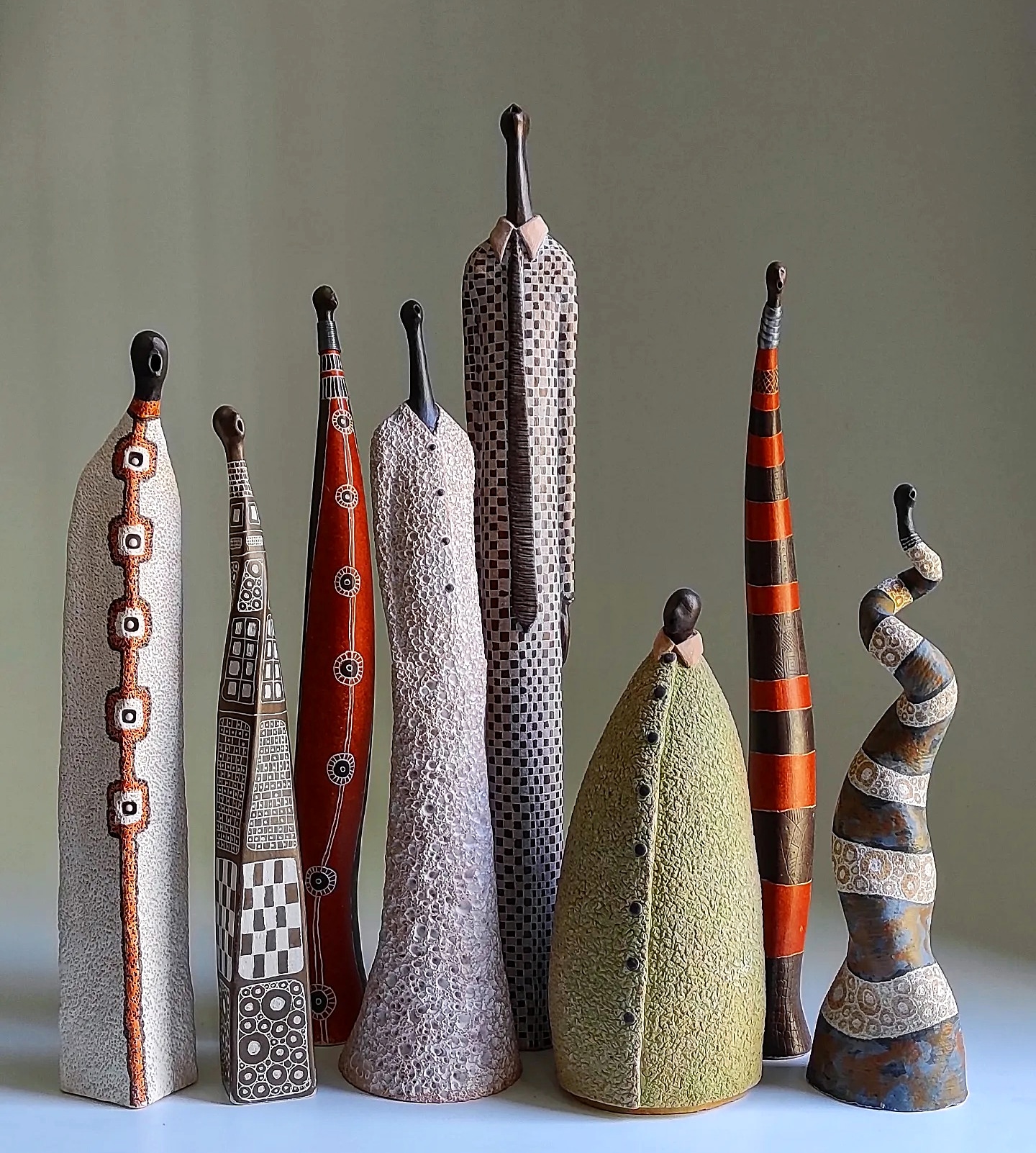Carlos Cabo, an artist known for his captivating ceramic creations, weaves magic into his work with garments of exquisite texture and richness. These ceramic figures, which have been recognized before, demonstrate the versatility of clay as a medium. The figures are distinctively tall and slender, each adorned in a variety of styles that include tunics with buttons, elegant dresses, neckties, and various hats. Their uniqueness is further amplified by a common, mesmerizing feature: all figures are sculpted with their mouths wide open, as if singing harmoniously towards the heavens.
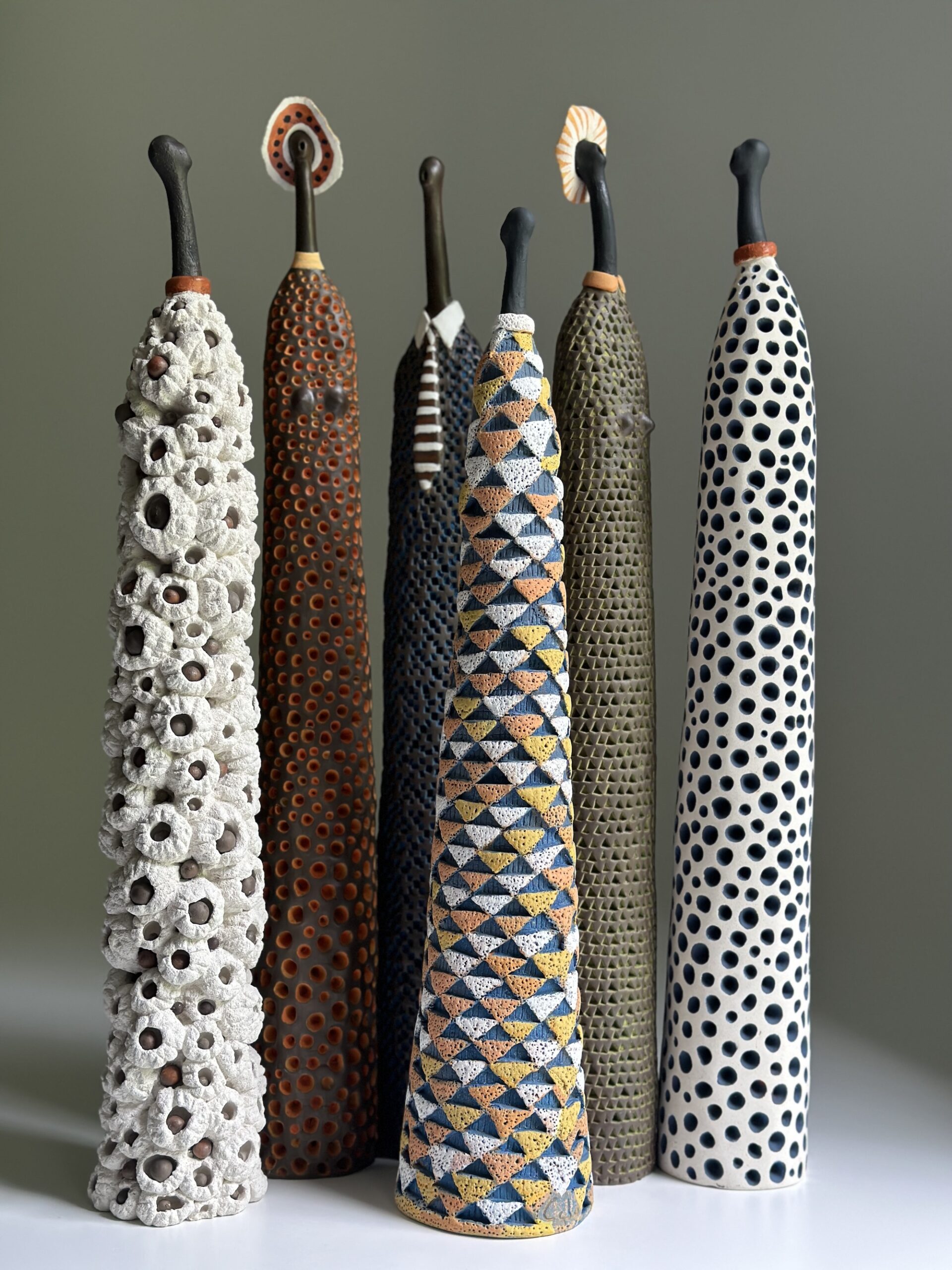
Cabo’s process of creating these figures begins in the tranquil countryside surrounding his home in Salinas, Spain. Here, he gathers the raw clay, which he then skillfully molds into figures resembling columns and various geometric shapes. He pays special attention to the texture of his creations, considering it the ‘skin’ of the piece. This approach not only highlights the individuality of each figure but also underscores the collective harmony and unity among them.
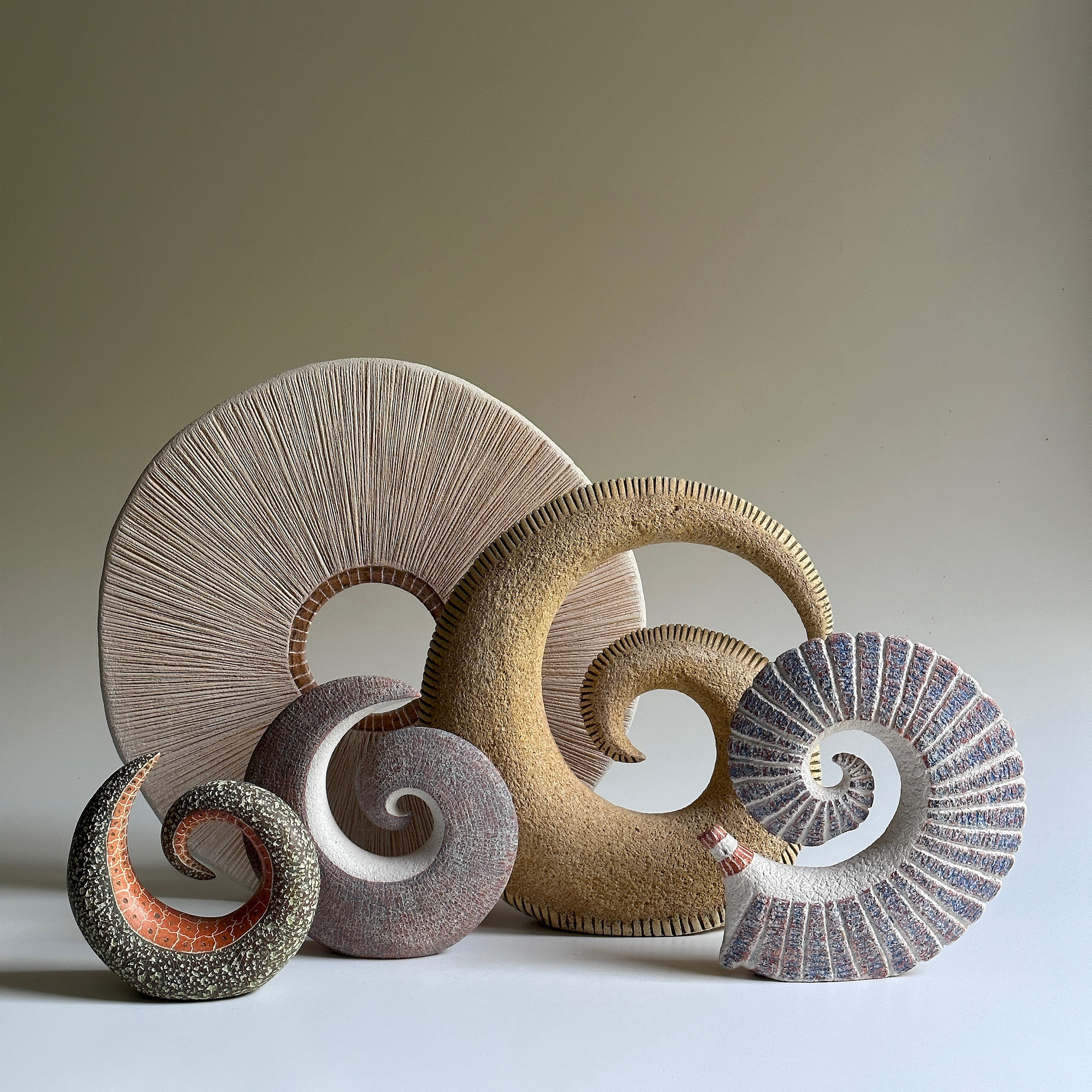
Cabo’s work is deeply rooted in the rich artistic traditions of Spain. Spain, located on the Iberian Peninsula in Europe, has a long and diverse history of art and culture. From the cave paintings of Altamira to the masterpieces of Picasso, Spanish art has always been a significant contributor to the global art scene. The latitude and longitude coordinates of Spain are approximately 40.4637° N, 3.7492° W. Its Mediterranean climate, vibrant history, and cultural diversity have influenced many artists over the centuries.
The artist’s choice of Salinas as his workspace is also noteworthy. Salinas, a small town in Spain, offers a serene environment that is ideal for the creative process. The town’s coordinates are approximately 43.4930° N, 5.9301° W. Such locations are often chosen by artists for their tranquility and inspiration.

Cabo’s art, while unique in its execution, draws on various artistic traditions. The use of clay links his work to the long history of ceramics in Spain, which dates back to the Roman times. Spanish ceramics, known for their intricate designs and vibrant colors, have evolved over centuries, incorporating various cultural influences.
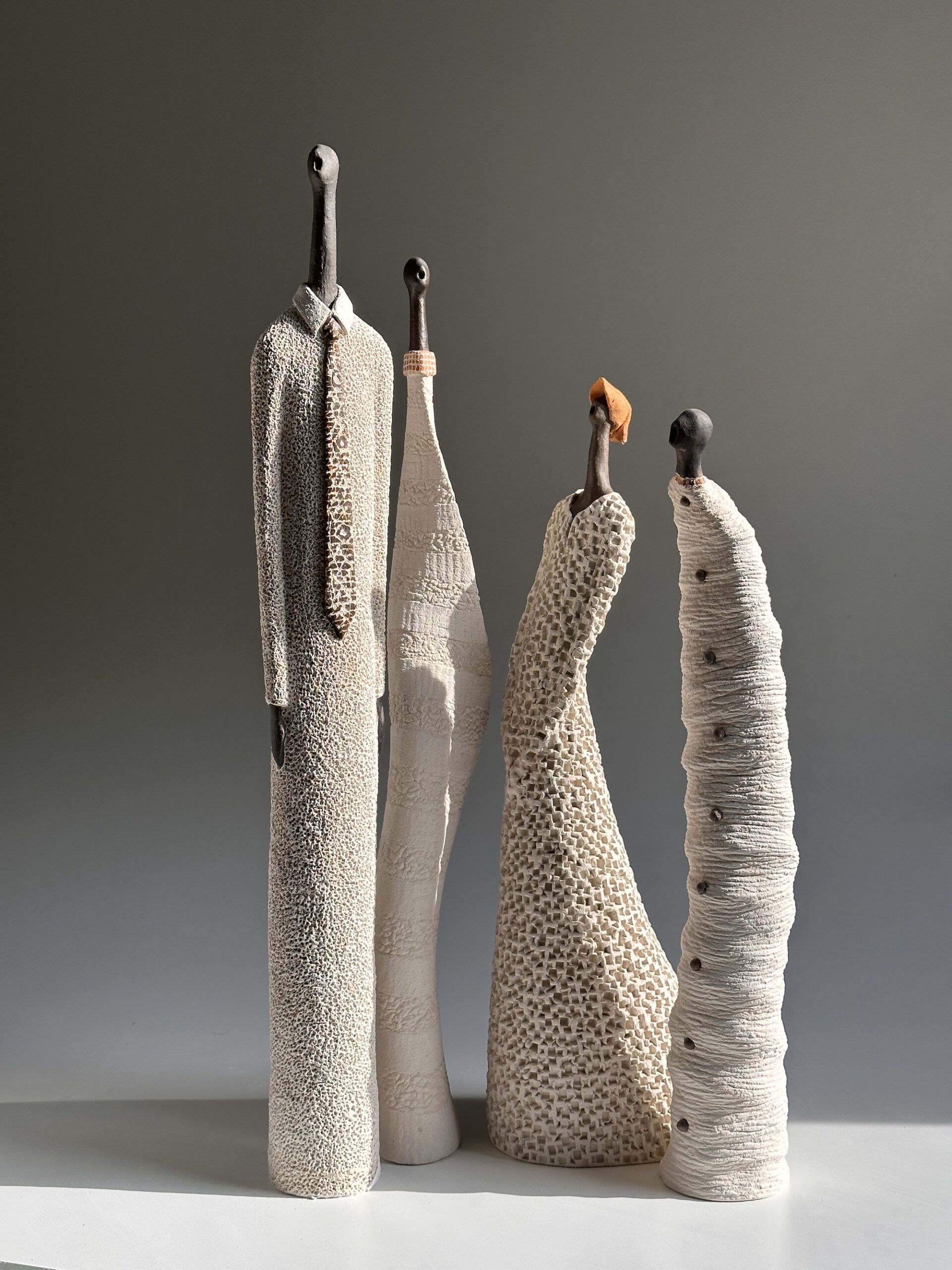
In contemporary art, the use of ceramics has seen a resurgence, with artists like Cabo exploring its potential beyond traditional boundaries. His work not only showcases the material’s versatility but also its ability to convey emotions and narratives. The open-mouthed singing posture of his figures, for instance, can be interpreted as a symbol of freedom, expression, or a connection to the divine.
Further exploration of Cabo’s work can be done through his online presence. His website and Instagram account provide a deeper insight into his artistic journey, showcasing his latest creations and the processes behind them. These platforms not only display his art but also connect him with a global audience, allowing art enthusiasts from around the world to engage with his work.

In summary, Carlos Cabo’s ceramic figures are a testament to the artistic potential of clay. His approach of blending traditional craftsmanship with contemporary themes results in artworks that are both individualistic and unified. The serene environment of Salinas, Spain, along with its rich cultural heritage, plays a significant role in his creative process. Cabo’s work stands as a modern representation of Spain’s artistic legacy, demonstrating the enduring relevance and adaptability of ceramic art.
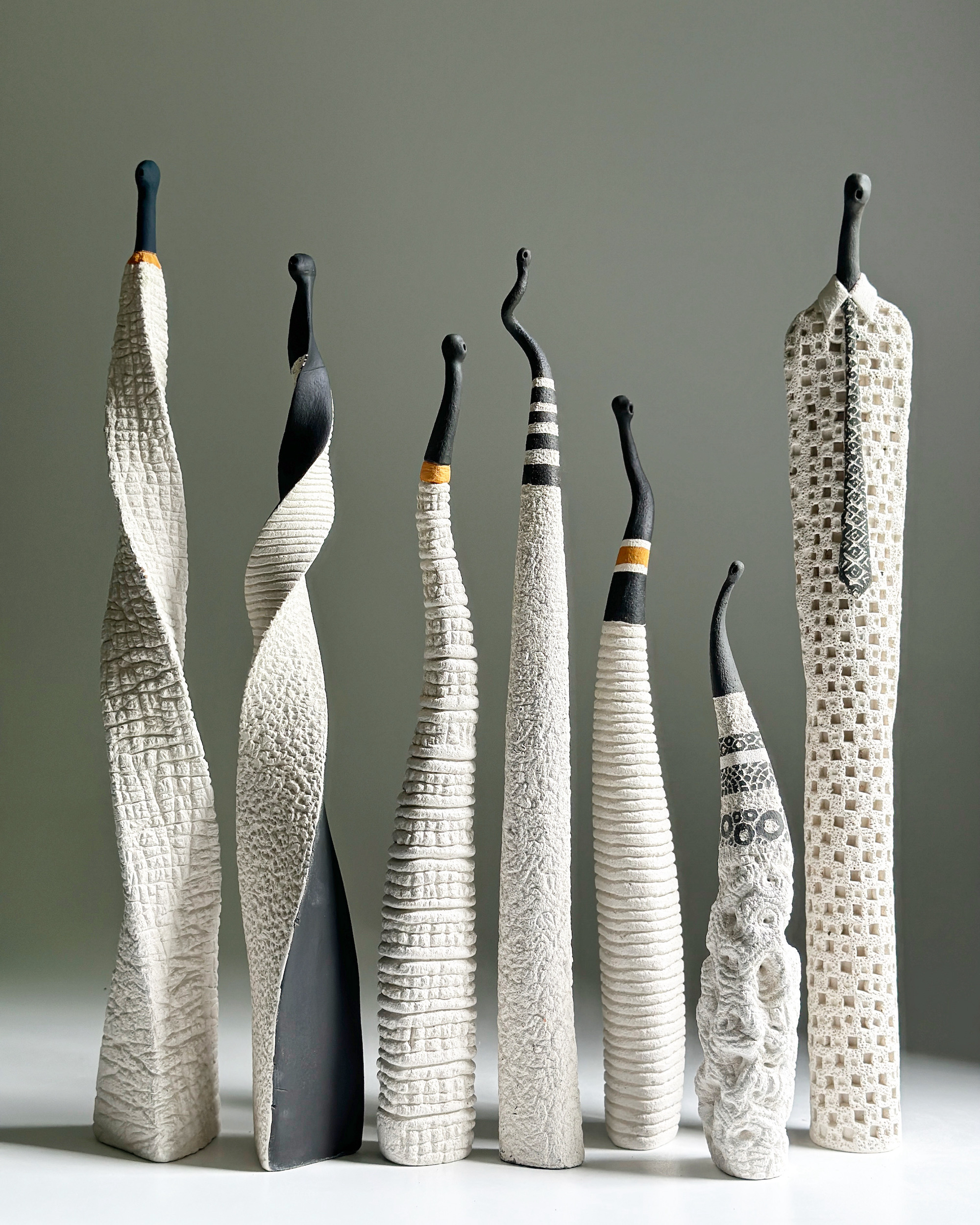
Key takeaways from this exploration of Carlos Cabo’s work include:
- The unique blend of traditional and contemporary styles in his ceramic figures.
- The significance of texture in differentiating and unifying his artworks.
- The influence of Spain’s rich cultural and artistic heritage on his work.
- The importance of the serene environment of Salinas in fostering creativity.
- The role of digital platforms in bringing global recognition to contemporary artists.
Cabo’s art not only contributes to the rich tapestry of Spanish art but also inspires new explorations in the realm of ceramic artistry.
